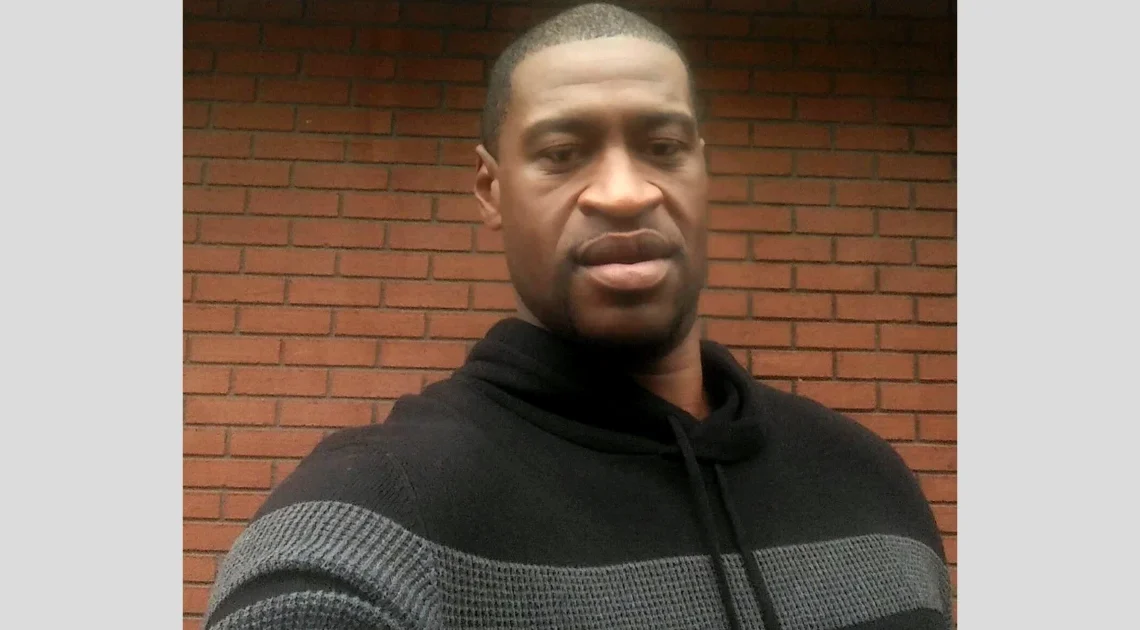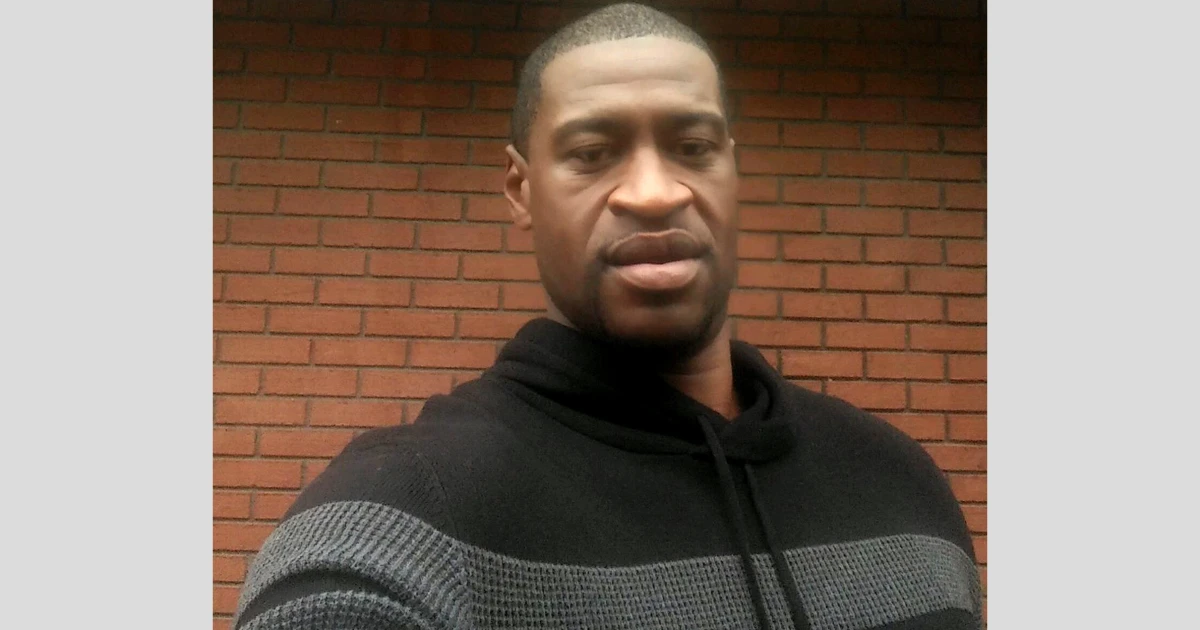
George Floyd Biography: Movies, Age, Story, Net Worth, Parents, Wife, Kids, Height, Verdict, Statue
Biography
George Perry Floyd Jr. (October 14, 1973 – May 25, 2020) was an African American man whose tragic death during a police arrest in Minneapolis, Minnesota, ignited global protests against racial injustice and police brutality.
A father, former athlete, and community-oriented individual, Floyd worked as a security guard and truck driver while pursuing music. On May 25, 2020, Floyd was killed when police officer Derek Chauvin kneeled on his neck for more than nine minutes during an arrest, an act captured on video that sparked outrage worldwide.
Trending Now!!:
Floyd‘s death became a pivotal moment for the Black Lives Matter movement, fueling protests, policy reforms, and vital discussions on systemic racism around the globe.
| African-American police victim | |
| George Floyd | |
|---|---|
 | |
| Wiki Facts & About Data | |
| Real Name: | George Perry Floyd Jr. |
| Stage Name: | George Floyd |
| Born: | 14 October 1973 (age 46 years old) |
| Place of Birth: | Fayetteville, North Carolina, United States |
| Died: | 25 May 2020 (age 46 years), Minneapolis, Minnesota, United States |
| Nationality: | American, African |
| Education: | Ryan Middle School, Jack Yates High School, South Florida State College, Texas A&M University–Kingsville |
| Height: | 1.93 m |
| Parents: | George Perry Floyd Sr., Larcenia Floyd |
| Siblings: | Latonya Floyd, Philonise Floyd, Bridgett Floyd, Rodney Floyd |
| Spouse: | Not Married |
| Girlfriend • Partner: | Courteney Ross (ex.), Roxie Washington (ex.) |
| Children: | Gianna Floyd, Connie Mason Floyd, Quincy Mason Floyd, Zion Kelly Floyd, George Floyd III |
| Occupation: | Musician • Former Athlete |
| Net Worth: | $100,000 (USD) |
Early Life & Education
George Perry Floyd Jr. was born in Fayetteville, North Carolina, on October 14, 1973. He was African American and raised in a Christian household.
Later, as an adult, he reconnected with his faith and became active in his religious community in Houston and Minneapolis, mentoring young men through church groups.
Floyd was born to George Perry Floyd Sr. (1949–2002) and Larcenia “Cissy” Jones Floyd (1947–2018). His parents separated when he was two, and his single mother moved the family to Houston, Texas.
He was the oldest of five siblings: Latonya Floyd (born c. 1969), Philonise Floyd (born June 1981), Bridgett Floyd (born 1990), and Rodney Floyd. After the separation, his mother settled with him and his siblings in the Cuney Homes public housing complex, known as “the Bricks,” in Houston’s Third Ward, a historically African-American neighborhood.
Growing up in poverty, Floyd faced economic hardship, eating makeshift meals like banana-and-mayonnaise sandwiches and washing clothes in a sink. Despite challenges, he was known for his warmth, often saying, “I love you,” to friends and family. His height—over six feet by middle school—earned him the nickname “Big Floyd” or “Perry.” He saw sports as a path to a better life and was described as a “gentle giant.”
Floyd attended Ryan Middle School in Houston and graduated from Jack Yates High School in 1993. There, he excelled as co-captain of the basketball team (playing power forward) and tight end on the football team, which reached the Texas state championships in 1992.
He was the first of his siblings to attend college, enrolling at South Florida Community College (now South Florida State College) on a football scholarship from 1993 to 1995, also playing basketball. He later transferred to Texas A&M University–Kingsville in 1995 but dropped out in 1997 without completing his degree.
Career
George Floyd’s life and career reflected a journey marked by athletic talent, creative expression, community involvement, and perseverance through personal and systemic struggles.
After leaving Texas A&M University–Kingsville in 1997, he returned to Houston’s Third Ward, where he became involved in the local hip-hop scene. Performing under the name “Big Floyd,” he collaborated with DJ Screw’s Screwed Up Click, contributing to mixtapes that gained regional popularity. Though passionate about music, it was more of a side pursuit than a full-time profession.
Floyd worked a variety of jobs to support himself and his family. He customized cars at a local Houston shop and later worked as a bouncer and security guard at clubs like Conga Latin Bistro, where his towering presence and calm demeanor made him a respected figure. Friends often praised his ability to handle tense situations with humor and empathy.
In the early 2000s, Floyd encountered legal challenges, including multiple arrests and a 2007 conviction for armed robbery, which led to a five-year prison sentence served from 2009 to 2013. Upon release, he focused on rebuilding his life. He became actively involved with Resurrection Houston, a local church, where he mentored young men, distributed food, and participated in outreach programs. During this period, he also worked as a truck driver, seeking stability and a path forward.
In 2014, Floyd relocated to Minneapolis through a church-supported rehabilitation program, hoping for a fresh start. There, he found work as a truck driver and later as a security guard at the Salvation Army’s Harbor Light Center.
By 2017, he was employed as a security guard at Conga Latin Bistro in St. Paul. However, the COVID-19 pandemic led to layoffs in early 2020. In the months before his death, he took on delivery jobs and worked part-time as a bouncer at Cup Foods, the convenience store where his fatal encounter with police would take place on May 25, 2020.
Personal Life
George Floyd was born on October 14, 1973, and was 46 years old at the time of his death on May 25, 2020. He stood 6 feet 4 inches tall, a physical presence that earned him the nickname “Big Floyd” and suited his sports and security work roles.
Floyd was not legally married, and there are no records of formal marriages. However, he had significant long-term relationships. In Minneapolis, he was in a committed relationship with Courteney Ross, a white woman he met in 2017 while working at the Salvation Army’s Harbor Light Center.
Ross described Floyd as a supportive partner who encouraged her to pursue therapy and education; she later earned an associate’s degree. Their relationship lasted until his death, and Ross spoke publicly about his character, emphasizing his kindness and faith.
Floyd had five children from previous relationships. With Roxie Washington, a former partner in Houston, he had a daughter, Gianna Floyd, born in 2013. Gianna was six years old when Floyd died, and Washington has since advocated for his legacy.
Floyd also had four older children from earlier relationships in Houston: two daughters, Connie Mason Floyd (born c. 1995) and Quincy Mason Floyd (born c. 1997), and two sons, Zion Kelly Floyd and George Floyd III. He remained connected to his children despite geographic distance, often expressing pride in their growth, especially Gianna‘s.
Cause of Death
George Floyd died on May 25, 2020, in Minneapolis, Minnesota, during a police arrest that would ignite global outrage. The incident began after Floyd was accused of using a counterfeit $20 bill at Cup Foods.
Officers responded, and video footage showed Officer Derek Chauvin kneeling on Floyd’s neck for over nine minutes while Floyd, handcuffed and lying face down, repeatedly pleaded, “I can’t breathe.”
Despite his cries and growing unresponsiveness, Chauvin maintained the position, while Officers Tou Thao, J. Alexander Kueng, and Thomas Lane either assisted or failed to intervene. Paramedics later pronounced Floyd dead at the scene.
The Hennepin County Medical Examiner’s Office ruled Floyd’s death a cardiopulmonary arrest caused by law enforcement subdual, restraint, and neck compression, with contributing factors including heart disease and the presence of fentanyl and methamphetamine. However, a private autopsy commissioned by Floyd’s family concluded he died of asphyxiation due to sustained pressure on his neck and back. Both autopsies underscored that Chauvin’s actions were central to Floyd’s death.
The killing sparked a firestorm. The footage, widely circulated online, ignited one of the largest protest movements in modern history, rallying under the Black Lives Matter banner. Millions across the U.S. and worldwide took to the streets to demand justice and an end to police brutality and systemic racism.
In April 2021, Chauvin was convicted of second-degree murder, third-degree murder, and second-degree manslaughter, receiving a 22.5-year prison sentence. The other three officers were charged with aiding and abetting and received various federal and state convictions.
Floyd’s death also became a flashpoint for national controversy. Critics of the officers cited the excessive and prolonged use of force, while some defenders—particularly within law enforcement circles—argued Chauvin’s actions followed police training, a claim disputed by Minneapolis officials.
Debate intensified around the drugs in Floyd’s system, with Chauvin’s defense suggesting that an overdose contributed to his death. Medical experts countered this, stating Floyd was alert and vocal until the restraint rendered him unconscious, confirming asphyxiation—not overdose—as the cause of death.
The broader discourse divided sharply. Supporters of police reform demanded defunding or dismantling traditional policing systems, while opponents pushed a “law and order” narrative, often focusing on Floyd’s past criminal record. Meanwhile, protests in cities like Minneapolis occasionally erupted into riots and looting, including the burning of a police precinct, sparking debates over the legitimacy of protest tactics and the distinction between peaceful activism and civil unrest.
Ultimately, George Floyd’s death laid bare deep divisions in American society. It catalyzed legislative proposals, corporate reckonings, and a fierce culture war over race, policing, and justice—debates that continue reverberating years later.
Net Worth
George Floyd’s net worth at the time of his death on May 25, 2020, is not precisely documented, as he was not a public figure or celebrity with significant wealth.
Floyd worked primarily in low-wage jobs as a security guard, truck driver, and bouncer, living in modest circumstances in Houston and Minneapolis. His income was likely limited, and he faced financial struggles, exacerbated by periods of incarceration and unemployment.
There are no credible reports of substantial assets or savings. Estimates from unverified sources occasionally cite figures below $100,000, but these lack substantiation. Floyd’s legacy, rather than material wealth, lies in the global impact of his death, which spurred widespread calls for racial justice and police reform.
NOTICE!! NOTICE!! NOTICE!!
At TheCityCeleb, we strive to provide accurate and up-to-date biographies and entertainment content, focusing on celebrities. Our editorial team researches information from reputable sources, including interviews, official statements, and verified media.If you spot an error or have additional details, please contact us at editor@thecityceleb.com. We value your feedback and are committed to maintaining trustworthy content.
